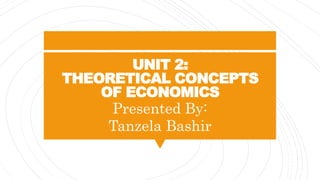The document defines several economic concepts and provides information on calculating gross domestic product (GDP) and national income. It discusses how GDP is measured using the expenditure, production, and income approaches. GDP can be nominal or real, with real GDP adjusting for inflation. National income includes factors like household income, gross national income, and net domestic product. Per capita GDP and income are also covered, which divide metrics by population. Economic growth rates represent the percentage change in variables like GDP over time.




































